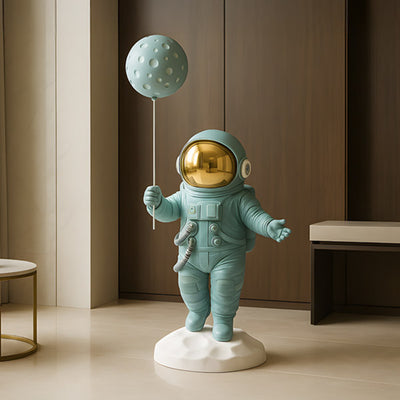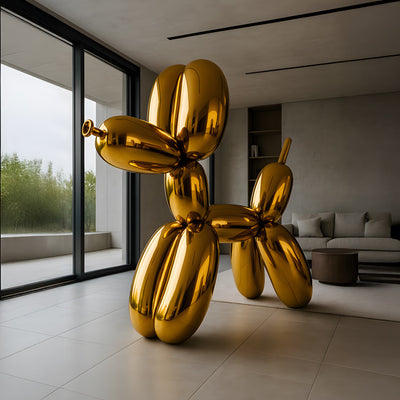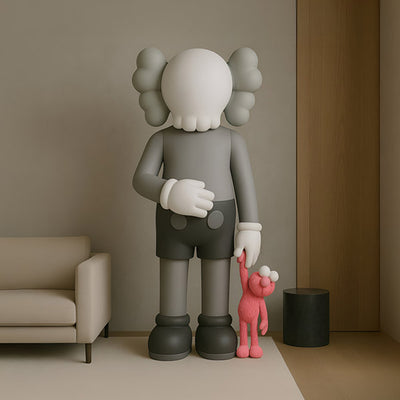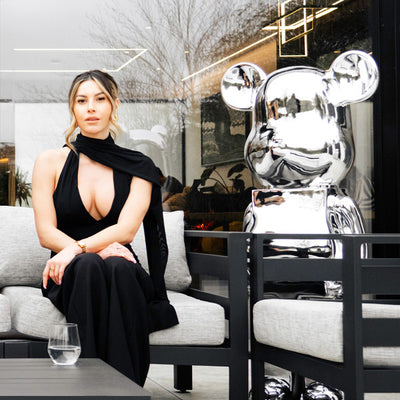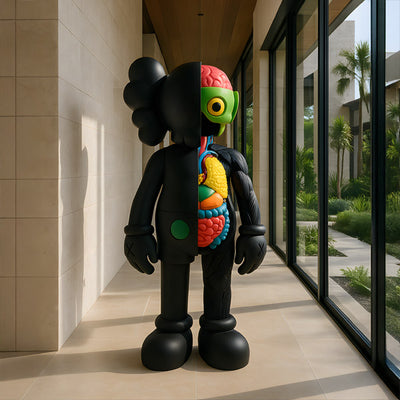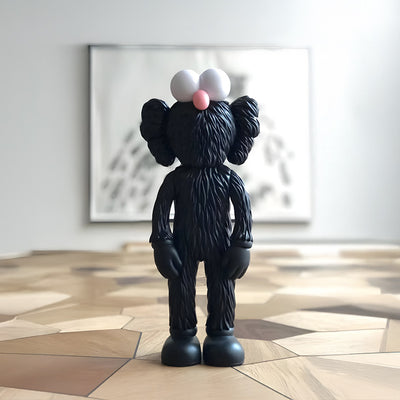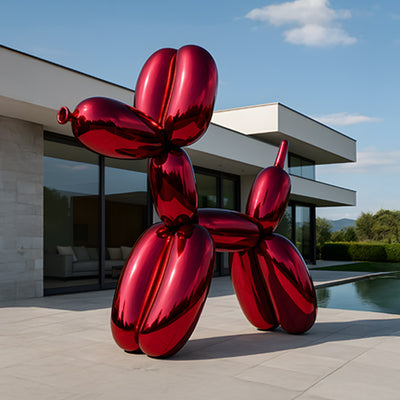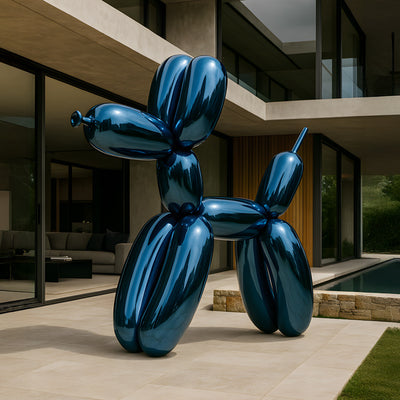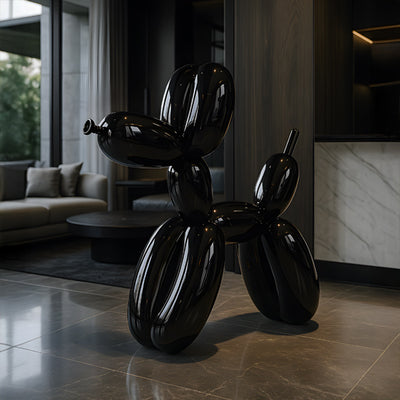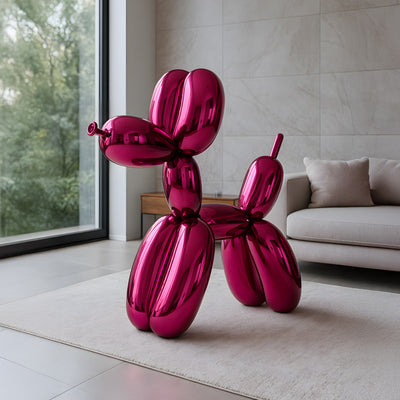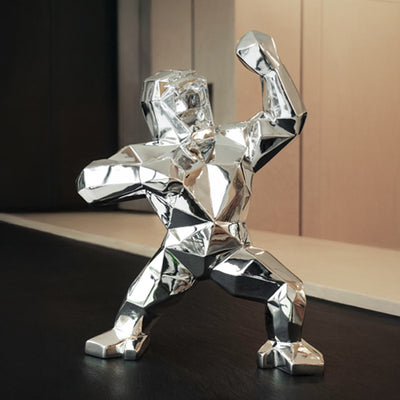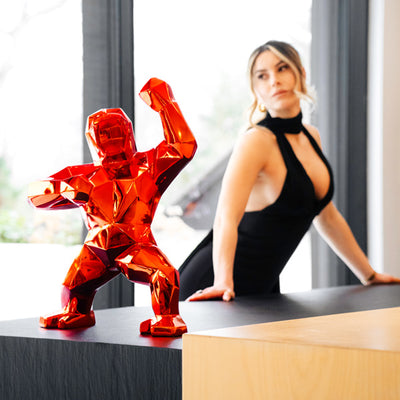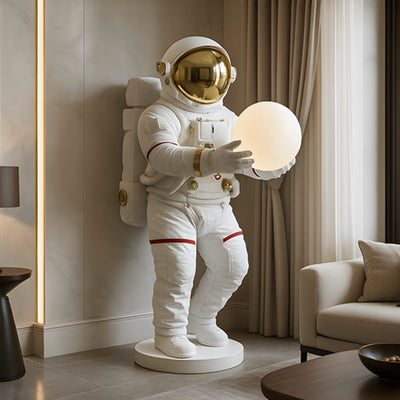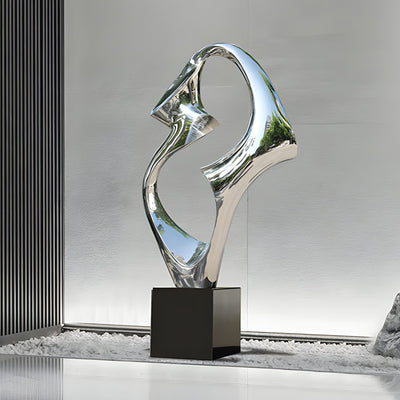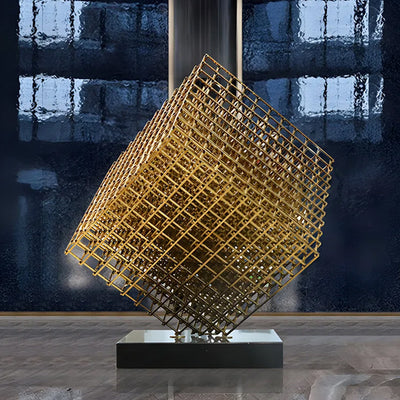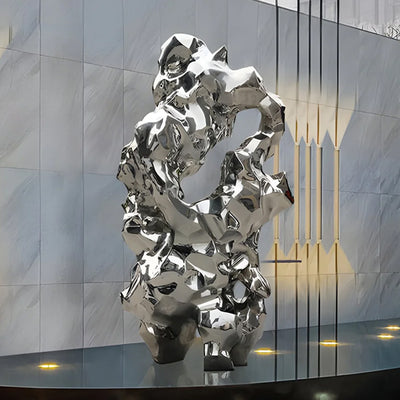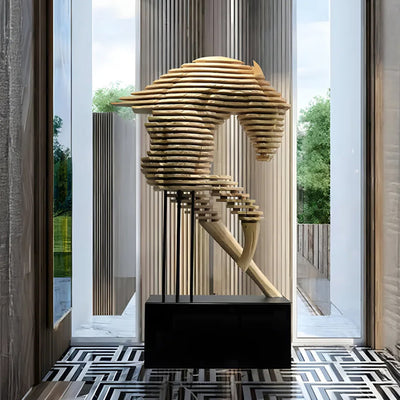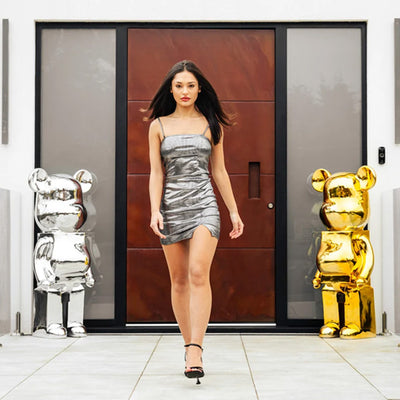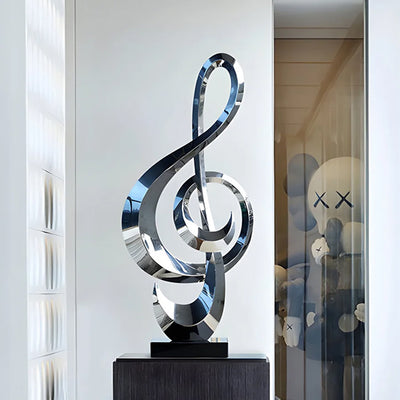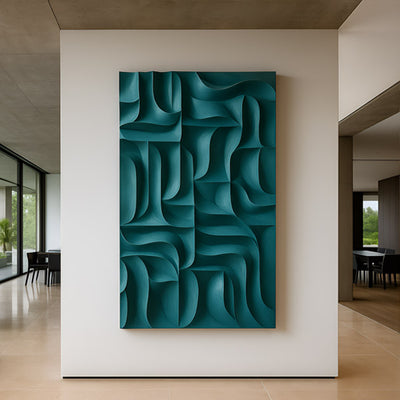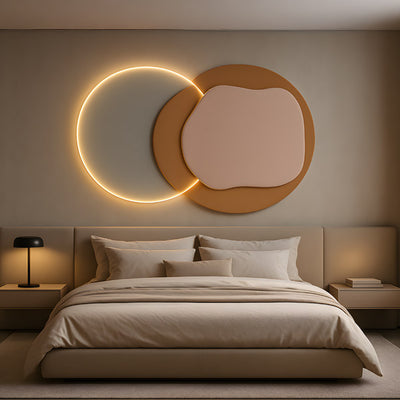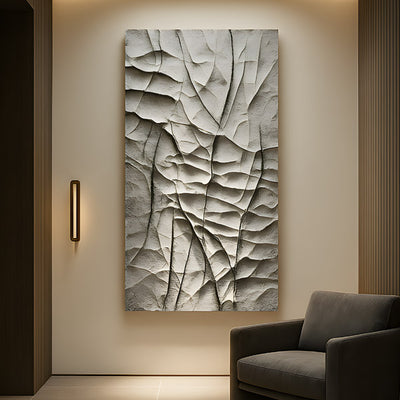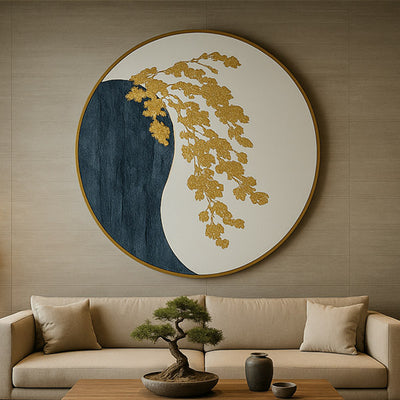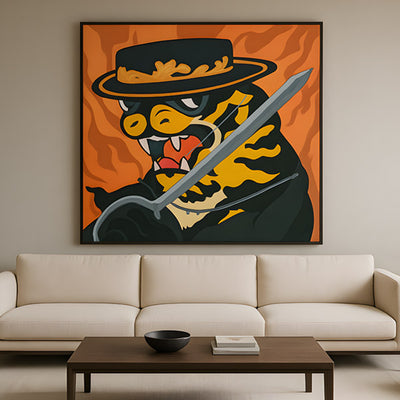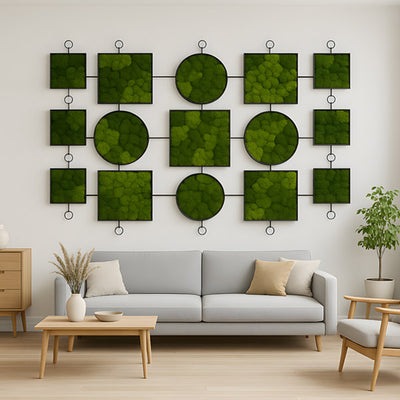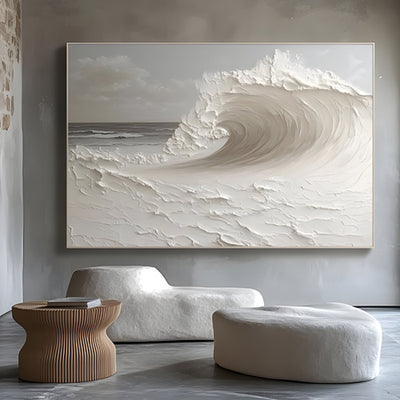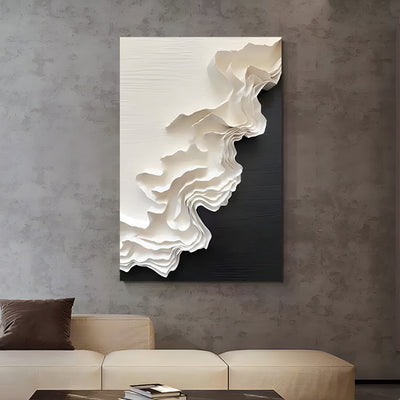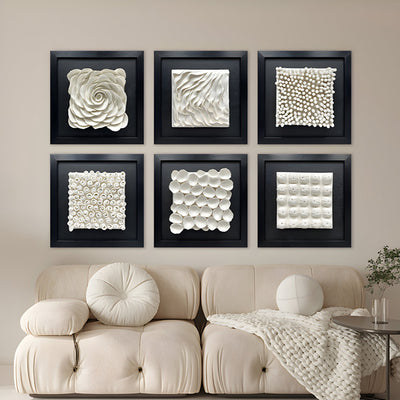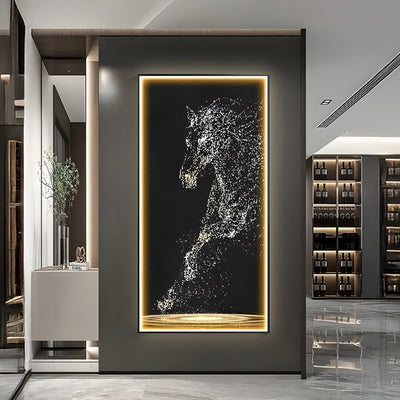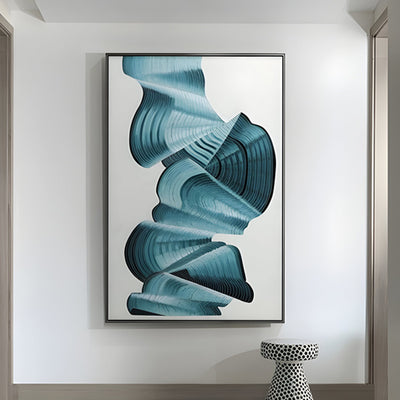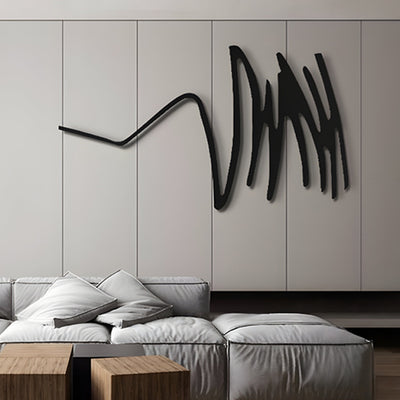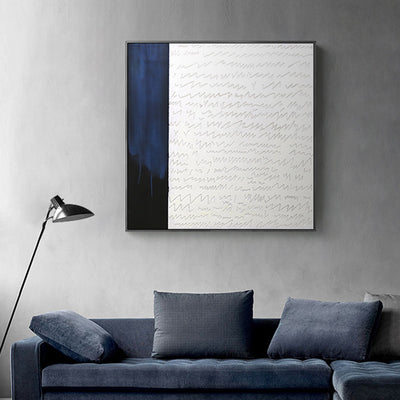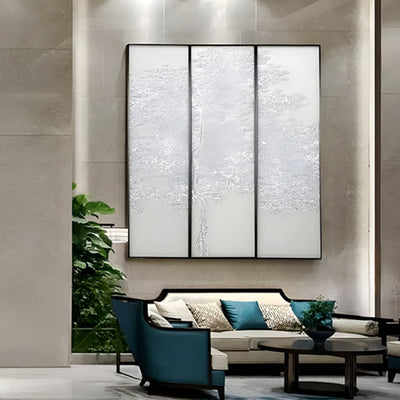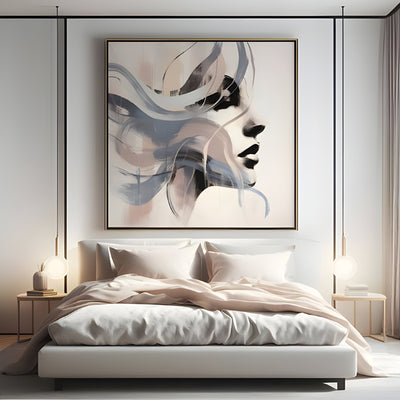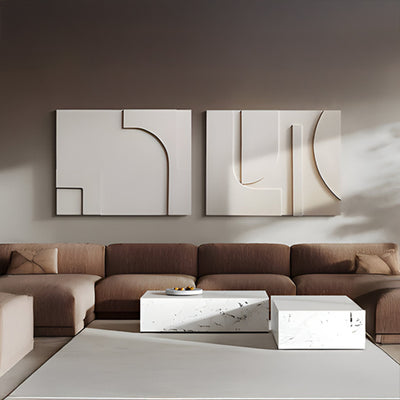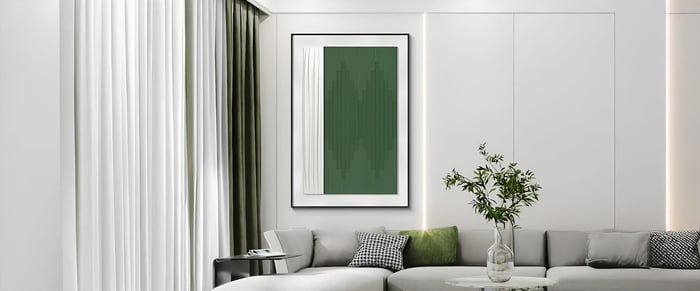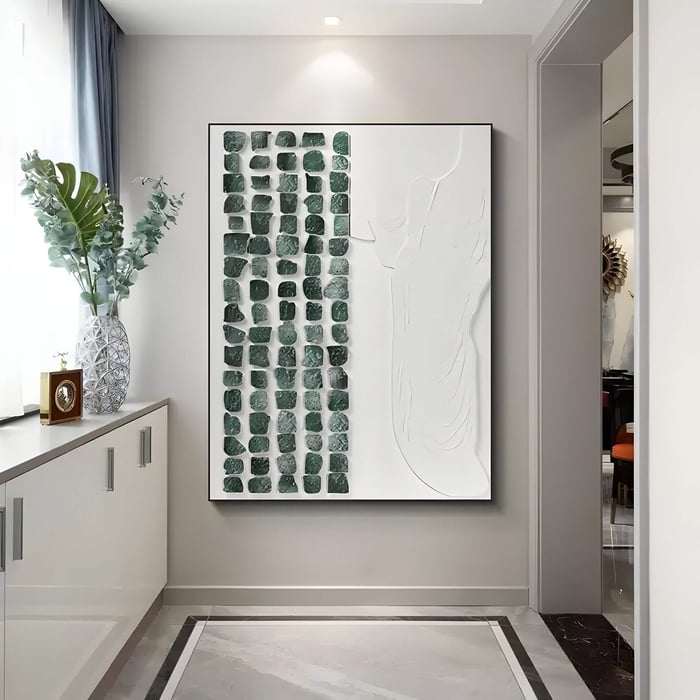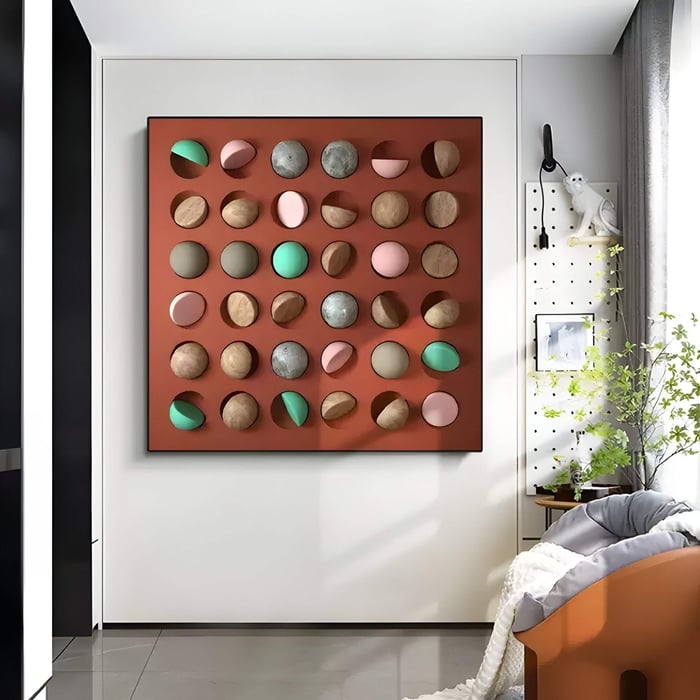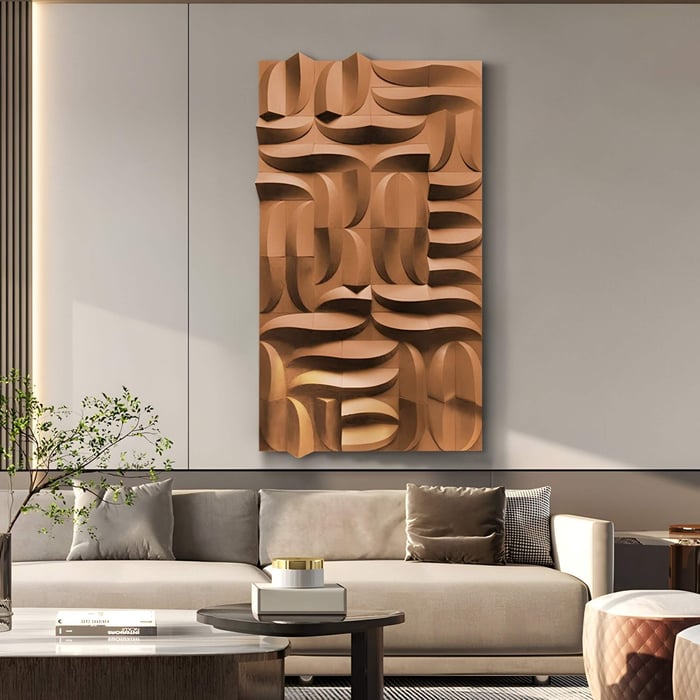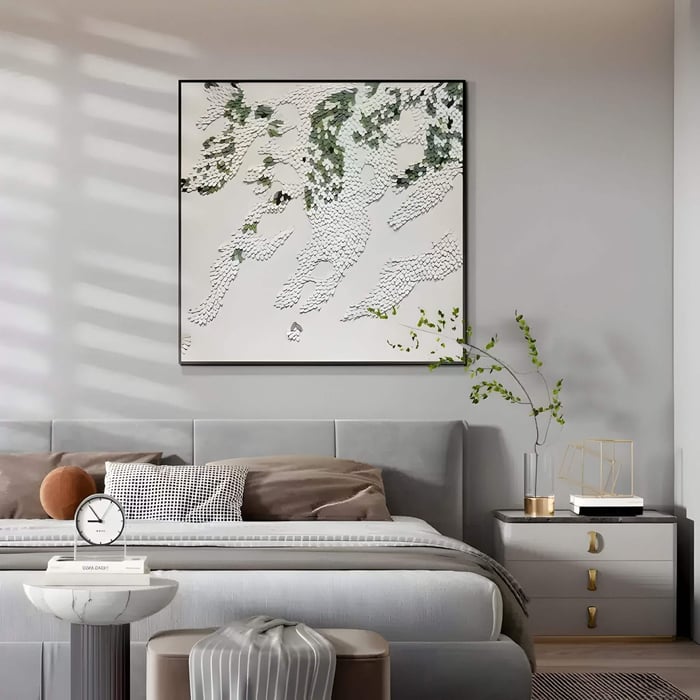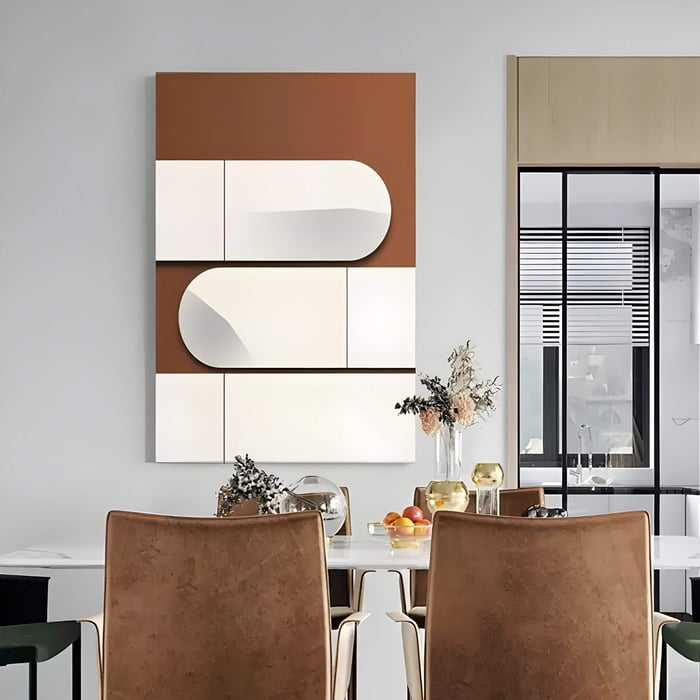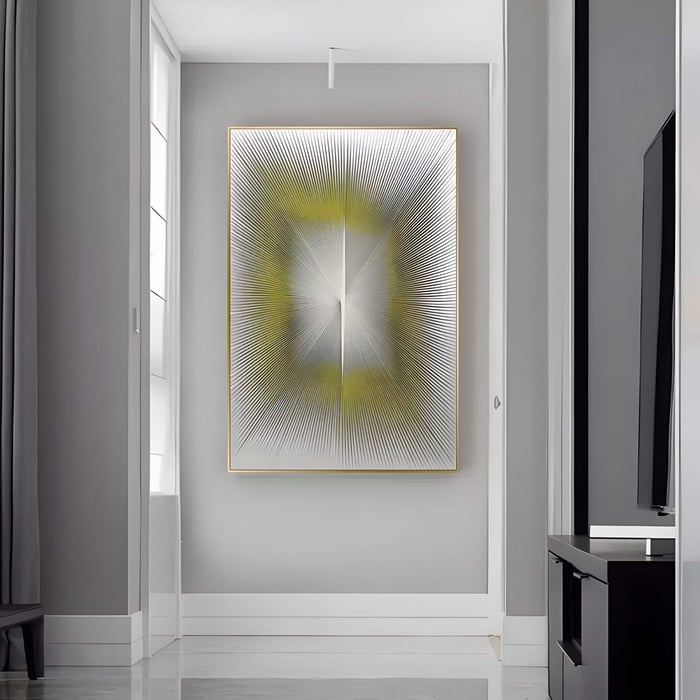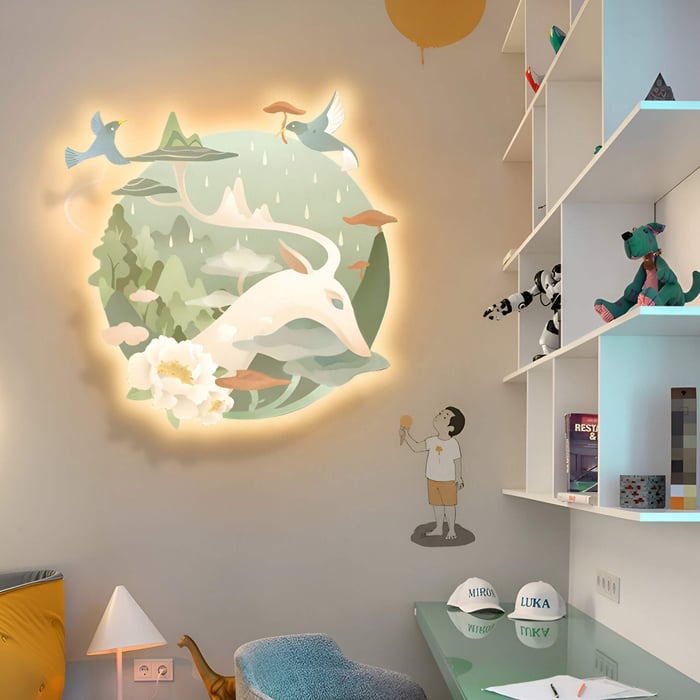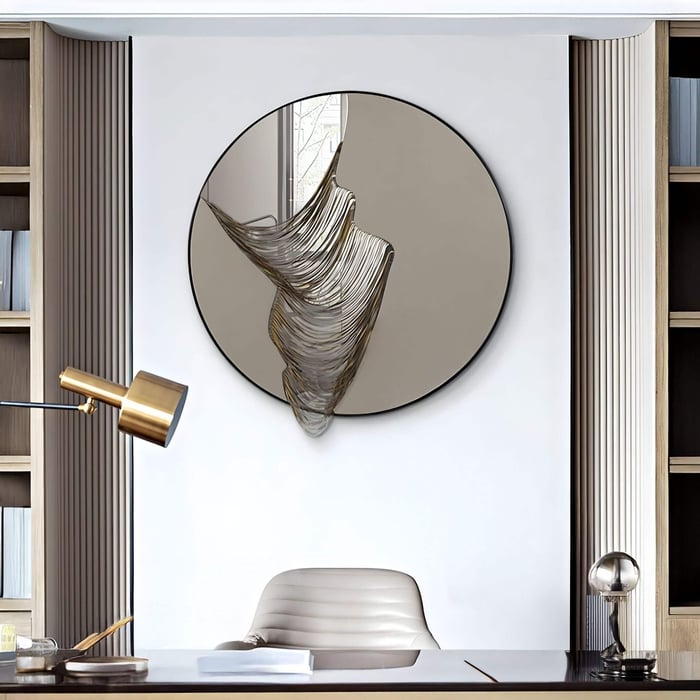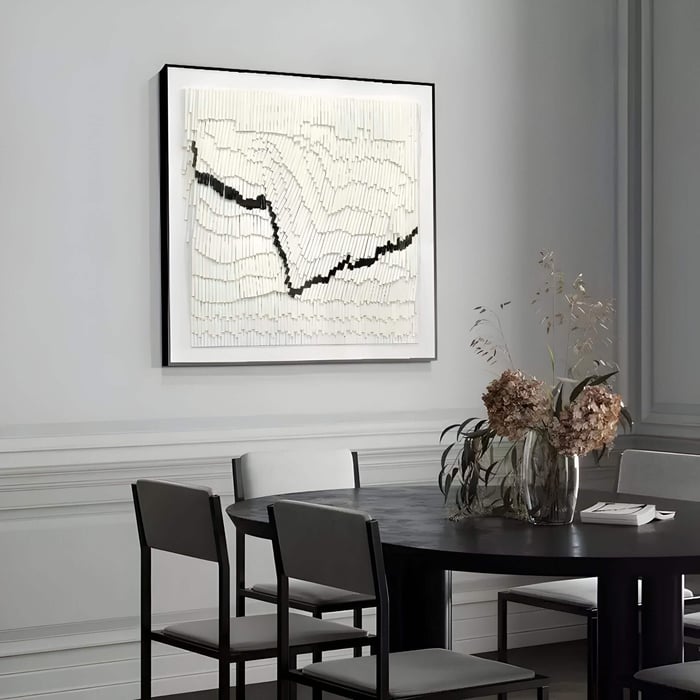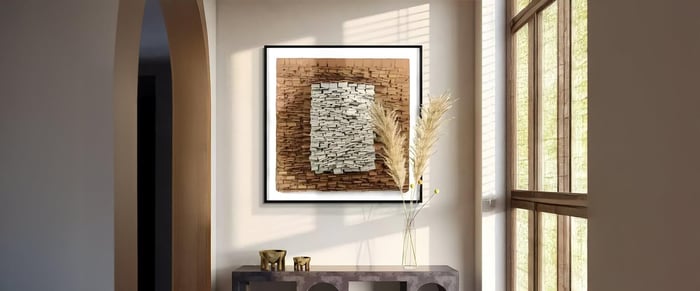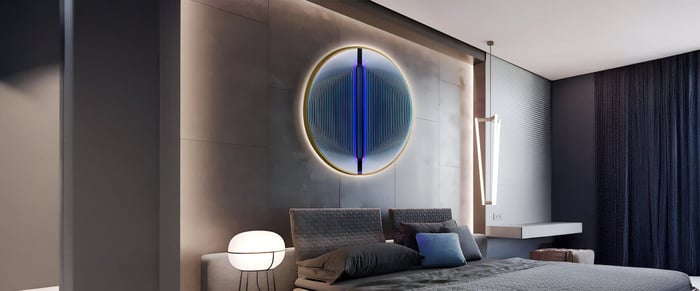Abstract art’s bold forms and vibrant colours can elevate any interior, but only if they’re hung thoughtfully. Unlike representational images, abstract pieces rely on scale, balance and context rather than subject matter to make an impact. Hang them too high, too low or too crowded, and you risk diminishing their power.
In this guide, we’ll walk you through the essentials of hanging abstract art: from eye‑level basics and group spacing to statement placements in living rooms, bedrooms, dining areas and beyond. You’ll learn the “art height rule,” how to scale pieces to furniture, tips for creating gallery‑style clusters, the right lighting and tools for a flawless installation, and how to avoid common pitfalls. Ready to transform your walls? Let’s dive in.
Abstract Art Placement Basics: Eye Level & Spacing
Hang Abstract Wall Art at Eye Level
The golden rule: position the centre of your artwork at approximately 145 cm (57 in) from the floor. This mid‑point aligns with the average viewer’s eye line, making your abstract piece feel instantly natural. If your room has unusually high or low ceilings, adjust this centre point by up to 10 cm. Similarly, if you’re hanging art over low‑profile furniture (console tables, sideboards), you might raise the artwork slightly so it sits comfortably above the piece.
Consistent Spacing for Grouped Abstract Wall Art
When creating a gallery wall abstract cluster, maintain a uniform 5–10 cm gap between frames. This spacing feels cohesive without overcrowding. To visualise the layout, use painter’s tape to mark each frame’s edges on the wall before committing to nails. That way, you can tweak the arrangement until it achieves the perfect balance.
Living Room Art: Hanging Abstract Art to Make a Statement
Rule of Two‑Thirds for Abstract Canvases
In living rooms, a single large canvas should span roughly two‑thirds the width of your sofa or console. For example, if your sofa is 180 cm wide, aim for an artwork about 120 cm across. This proportion creates harmony, ensuring the piece feels neither dwarfed nor overpowering.
Height Above Furniture
Position the bottom edge of the artwork 20–25 cm above the furniture’s top. This gap visually connects the art and furniture, knitting them into a single design statement. Smaller pieces or triptychs can sit slightly closer, around 15 cm, if your ceiling is lower or the furniture bulkier.
Accent Lighting
Highlight texture and colour depth with abstract art lighting. Wall‑mounted picture lights or adjustable sconces angled at 30 degrees cast gentle illumination that accentuates brushstrokes and metallic inks. For large pieces, consider a recessed track light with multiple adjustable heads to wash the canvas evenly.
Bedroom Art: Creating a Harmonious Retreat
Centred Over the Bed
In bedrooms, centre a single large abstract canvas or a triptych over the headboard. Align the artwork’s midpoint with the bed’s centre and keep the bottom edge about 15–20 cm above the headboard. This symmetry provides a calming anchor for the room.
Soft‑Toned Abstract Art
Choose abstract paintings with muted palettes - sage greens, dusty blues, warm greys, to foster relaxation. Watercolour‑inspired abstractions or gentle gradient canvases blend seamlessly with linens and soft furnishings.
Gallery Wall Above Nightstands
For a more dynamic look, hang two smaller abstracts, one over each bedside table. Match frame styles and maintain equal spacing (5–8 cm) between each piece and the top of the nightstand. This balanced pairing adds personality without disrupting the room’s tranquillity.
Dining Room Art: Elevating Meals with Abstract Art
Central Piece Above the Table
Hang one statement abstract about two‑thirds the width of your dining table. Center the artwork above the table’s midpoint, keeping its bottom edge roughly 25 cm above the tabletop. This creates a visual anchor and frames dinner gatherings beautifully.
Match Dining Style
Select abstracts that complement your dining décor. Mid‑century modern settings flourish with bold geometric patterns in vibrant hues; industrial lofts suit monochrome metal prints or black‑and‑white abstractions.
Layer with Centrepieces
Coordinate tabletop displays - candlesticks, floral arrangements or sculptural ceramics, to echo motifs or colours in the artwork. This cohesive layering ties the room together and enhances the dining experience.
Hallway Art Ideas: Energising Transitional Zones
Sequential Gallery Wall
Line up 3–5 small abstracts in a horizontal run to guide the eye down a corridor. Use consistent frame sizes - 30×30 or 40×40 cm, and level the centre line at 145 cm. This rhythmical layout adds interest without overwhelming narrow spaces.
Single Oversized Vertical Piece
In a tight hallway, a tall vertical abstract (e.g., 60×120 cm) can create the illusion of higher ceilings. Place its midpoint at eye level and ensure at least 15 cm clearance from door frames or skirting to maintain proportion.
Accent Lighting
Install LED strip lights or recessed spotlights along the ceiling rail to illuminate your hallway art. Soft, directional lighting will highlight colours and textures even in lower‑lit passages.
Kids’ Room Art: Playful Abstract Designs for Creative Spaces
Bright, Bold Abstract Prints
Stimulate young imaginations with vivid palettes - reds, yellows, blues, in splashy, fun shapes. These abstract prints double as colourful décor and creative inspiration.
Educational Elements
Choose abstract shapes that double as learning tools: letters formed from geometric brushstrokes, number patterns in colourful circles or animal silhouettes abstracted into playful forms.
Removable Options
Opt for framed canvases or peel‑and‑stick abstract decals so you can update the look as tastes change. Lightweight frames and adhesive hooks ensure easy swaps and minimal wall damage.
Office Art: Inspiring Focus with Abstract Art
Neutral Abstract Artworks for Concentration
Black‑and‑white or grayscale abstracts provide sophistication without distracting colour. Hang one centred above your desk, ensuring it’s within your peripheral view to inspire focus without overwhelming.
Statement Pieces for Creative Spaces
In design studios or brainstorming rooms, bold, colourful abstracts can spark innovation. Position these pieces on side walls or behind collaborative seating areas to energise group sessions.
Strategic Placement
Avoid direct glare on screens, hang art perpendicular to windows or use anti‑glare glass in frames. Keep artworks within your sightline for maximum inspiration but out of direct reflection.
Tools & Techniques: Pro Tips for Hanging Abstract Art
Stud‑Finder & Level: Locate wall studs for secure anchoring, especially for heavy canvases.
Mock‑Up Templates: Cut kraft‑paper templates the size of your frames. Tape them to the wall to visualise placement and spacing before drilling.
Adjustable Hooks & Rails: Picture‑hanging systems with slim wall rails allow easy repositioning and precise levelling after installation.
Common Mistakes & How to Avoid Them
Too High or Too Low: Ignoring the 145 cm centre rule leads to awkward viewing. Always measure and mark before drilling.
Overcrowding: Cramming multiple pieces without consistent spacing (5–10 cm) makes clusters feel chaotic. Less is more, allow negative space.
Mixed Styles & Frames: A hodgepodge of frame designs and art styles can look disjointed. Stick to one frame style and cohesive colour palette for grouped abstracts.
Conclusion & Next Steps
Well‑placed abstract paintings does more than decorate walls, it shapes mood, defines zones and reflects personal style. Remember to centre artwork at eye level, scale pieces to furniture, maintain consistent spacing, and light them thoughtfully. Whether you’re creating a gallery wall in the living room, a serene canvas above the bed, or playful prints in a children’s corner, intentional placement transforms abstract art from mere decoration into dynamic design statements.
Ready to enhance your walls? Browse our curated abstract art collection at Giant Sculptures and experiment with new layouts. Snap a photo of your perfect placement and share your creative results, your next masterpiece awaits!
